“I decided to become a cancer researcher because cancer is part of the human condition,” says Dr Claude Perreault, a researcher at the Institute for Research in Immunology and Cancer (IRIC) and a professor at the University of Montreal.
Before his days as a leading cancer researcher, Dr Perreault was a clinician who cared for people with hematological cancers. He liked challenges and was committed to treating the worst of these cancers.
Over time, however, he realized that he felt more pain when he lost a patient than the pride and happiness he felt when he was able to save patients. And as someone who lost a young sister to cancer, Dr Perreault often felt a similar kind of grief with the people he couldn’t help.
He decided that he wanted to dedicate his career to finding a solution.
Because [cancer] is inherent to the human condition and this is so painful, I decided to devote my career to cancer research.
“The leading cause of many cancer types is sheer bad luck – errors in copying DNA during cell division,” Dr Perreault explains. “There is nothing you can do to prevent this from happening. These errors represent an unavoidable and cruel component of the human condition. Only research can change this.”
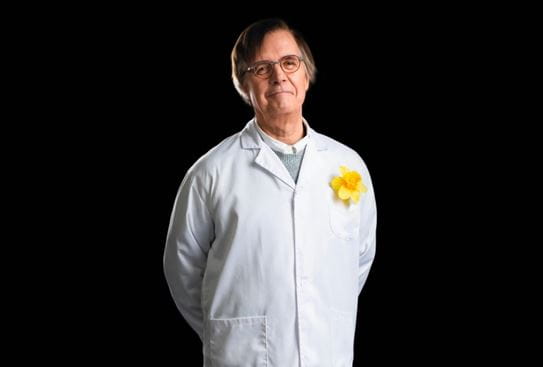
The research breakthrough
The goal of Dr Perreault’s research was to develop a vaccine to treat cancer. And with support from the Canadian Cancer Society (CCS), Dr Perreault and his team made a research breakthrough in December 2018.
Like researchers all over the world, Dr Perreault and his team were searching for cancer-specific antigens – molecules only present in cancer cells that the immune system can recognize. When the immune system recognizes these molecules, it can kill the cancer cell.
To make a vaccine containing cancer-specific antigens, the researchers needed to know what the molecular structure of the antigen was.
The team looked at every possible standard molecule but still could not find any that corresponded to a cancer-specific antigen. They wondered if the antigens they were looking for were not standard molecules after all.
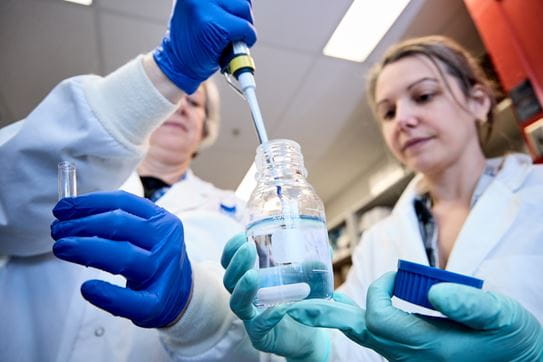
“There is one thing that we knew at this time. If you look at the DNA of someone, we know that the DNA of cancer is abnormal. What people call genes represent 2% of your entire DNA. The rest of the DNA has been called ‘junk DNA,’” Dr Perreault explains.
They asked themselves, was it possible that their answer was in the junk DNA?
Until 2018, scientists around the world were only studying 2% of the genome. But with the help of computer scientists, Dr Perreault’s team developed tools to explore the entire genome – including the junk DNA – hoping to find the cancer-specific antigens everyone was searching for.
They discovered they were right. They found a large number of cancer-specific antigens coded by the junk DNA.
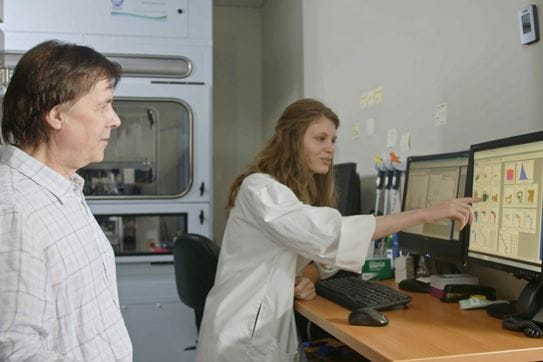
The breakthrough that we made is something that all research groups around the world were trying to discover.
They were then ready to develop their cancer vaccines.
After discovering the antigens, the team treated mice with cancer using the vaccines containing those antigens. Their tumours shrunk.
If it wasn't for funding by the Canadian Cancer Society, I'm really not sure we would have achieved this breakthrough. It would have been at least postponed by a lot, and I suspect that it would not have been done.
Hope for the future of cancer vaccines
After successful progress, Dr Perreault’s team expects that the first clinical trials will begin in 2 years at most.
“There won't be one vaccine for all cancers or for all types of cancers. But we think now it is possible to have one vaccine for, for example, all patients with breast cancer or all those with lung cancer. So, one vaccine per cancer type,” Dr Perreault explains.
This is not an unrealistic dream. This is really based on serious data. And I hope this is something that we will see in a few years.
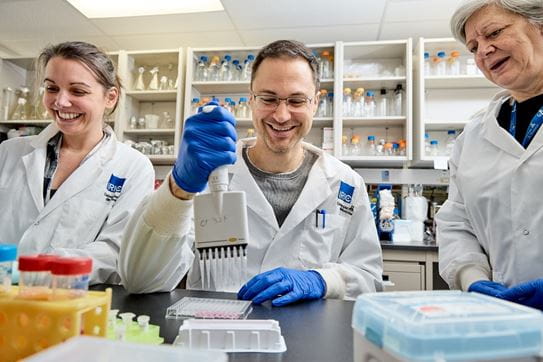
Dr Perreault and his team are hoping the vaccines they are developing will have 3 advantages:
- If they are as effective in humans as they are in mice, they would help cure patients with especially resistant types of cancer.
- Dr Perreault’s team expects the vaccines to have very few side effects when compared to receiving treatments like chemotherapy.
- They expect benefits related to the cost and affordability of these vaccines. “We are working on off-the-shelf vaccines, meaning vaccines that will be able to cure all patients with one type of cancer. They won't have to be customized to each individual patient. This will reduce the cost enormously and make these vaccines relatively cheap,” Dr Perreault says.
As a researcher, hope is an important part of Dr Perreault’s work.
One thing is sure; we want the future to be better than the present. When you're doing research and trying to find a solution, optimism is a prerequisite. I think that hope is crucial. Hope goes with optimism.
Help hope bloom this Daffodil Month
As the first flower to bloom in the spring, daffodils are resilient. For those living with cancer, the daffodil is a symbol of hope. This Daffodil Month, the Canadian Cancer Society (CCS) is inviting people across Canada to become part of a powerful collective that is changing the future of cancer in Canada.
There has been incredible progress when it comes to cancer – survival rates have gone up and death rates have gone down. Thanks to the generosity of our donors who have supported CCS during Daffodil Month, we have funded research that’s led to life-saving results. But there is still much to be done.
Because of our growing and aging population, the number of new cancer cases is expected to increase by about 40%.
“It is very important to give to the Canadian Cancer Society right now because the frequency of cancer is increasing because our population is growing and aging,” Dr Perreault says. “On the other hand, the research opportunities are more exciting than they have ever been before.”
Right now is the right time. Every donation counts.
Impactful research and breakthroughs like Dr Perreault’s require time and continuous funding. Every day, supporters help fund the country’s brightest minds doing the most promising research that could change the future of cancer.
“To me, the daffodil represents solidarity – solidarity between people in the community and between volunteers from the Canadian Cancer Society and the research community,” Dr Perreault says.
Collaboration is vital – collaboration between scientists from various disciplines, but collaboration between the entire society and researchers is important.
To people who have already donated, Dr Perreault would like to say, “Thank you. You have changed the lives of many people.”
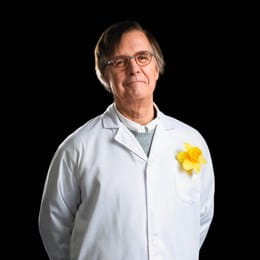
It’s more important than ever to give to the Canadian Cancer Society because of the research opportunities that are on the horizon.
Help create a future without cancer
With support from readers like you, we can continue to make a meaningful impact for people affected by cancer.
We are determined to increase survival, stop cancer before it starts, and improve lives. But we can’t do it without you.
If everyone reading this gave just $5, we could achieve our goal this month to fund the most promising research, compassionate support and transformative advocacy. Please give today because every contribution counts. Thank you.
